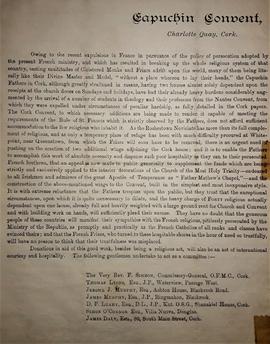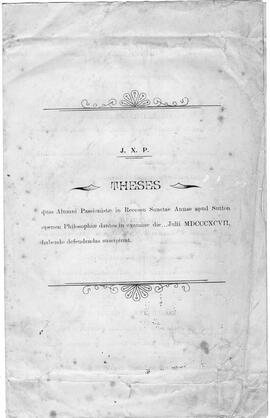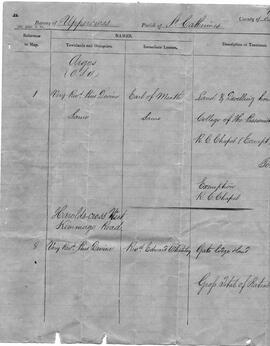Extracts by Fr. Angelus Healy OFM Cap. from John Windle’s (1801-1865) 'Historical and Descriptive Notes of the City of Cork and its Vicinity' relating to Cork parishes and Holy Trinity Church.
Sem títuloLetters to Fr. Angelus Healy OFM Cap. from Fr. Stanislaus Kavanagh OFM Cap., St. Bonaventure’s, Cork, seeking information on the Capuchins of Cork city (with sources) from circa 1654-1766. Fr. Stanislaus refers to Fr. T.J. Walsh’s article on the Cork Capuchins: ‘It reaches a high level, and will read well. You know he is preparing it for the Capuchin Annual, with illustrations’.
Sem títuloBiographical details compiled by Fr. Angelus Healy OFM Cap. of eighteenth- and early nineteenth-century Cork Capuchins. The document is titled ‘Vassy, 23rd April 1833’. Those named are: ‘James O’Leahy. Died in France, 22 January 1817; Thomas Chinnery. Received in Vassy, 3 November 1783. Information is also given in respect of Edward Nugent (from Dalytown, County Longford), Died in France, 1795; James Jones (from Dunshaughlin, County Meath) ‘Died in Dublin in 1805, whilst seeking priests to help in his missions’.
Sem títuloLetter from Fr. Nessan Shaw OFM Cap. (1914-1997), the presbytery, Gurranabraher, Cork, to Fr. Padraig Ó Cuill OFM Cap. enclosing newspaper cuttings of his articles published in the 'Evening Echo' from 18-21 Aug. 1982.
Sem títuloAn appeal in support of exiled French Capuchins in Cork. The appeal notes that the friars have been exiled as part of 'the policy of persecution adopted by the present French ministry, and which has resulted in breaking up the whole religious system of that country'. This original printed appeal is pasted into the volume at p. 4.
MOUNT ARGUS : ARRIVALS AND DEPARTURES
Notebook recording arrivals and departures at Mt. Argus between 01.01.1891 and 28.09.1922.
Mount Agus; Students: Leaflet: St. Anne's Retreat, Sutton. THESES quas Alumni .. operam PHILOSOPHIAE dantes Defendendas. 3 Theses for each Student: i.e. Cfrs. Gerard, George, Robert, Boniface, Adrian, Gabriel. Lector: Aloysius of Our Lady of Good Counsel.
Mount Argus: missions and Retreats: Woolet, C.P.,. Gerard: press cutting describing the "Big Mission" at Killane, near Rhodes, parish of Edenderry, Offaly at which Fr. Gerard Woolet was especially prominent,
Mount Argus: Buildings/ Lands: Rates: Valuation sheet Barony of Uppercross (cv of I) Parish of St. Catherinne, Union of South Dublin, Electoral District of Rathmines. Argos (Argus?) Very Rev, Pius Devine. Immediate Lessor, the Earl of Meath# Rev. Mr. Whately: 23 acres, i rood, 27 perches: £269 gross total of reteable property.


